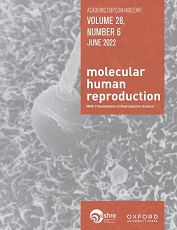A Christow, X Sun, K Gemzell-Danielsson

Abstract
It is likely that mifepristone or levonorgestrel in the future will find extended use for contraceptive purposes. It is therefore essential to characterize the modes of action of these compounds. To assess the effect on the human Fallopian tube, 24 women with regular menstrual cycles and proven fertility, admitted to the hospital for voluntary sterilization by laparoscopic technique, were randomly allocated to a control or one of two treatment groups. Treatments were given with either a single dose of 200 mg mifepristone or 0.75 mg levonorgestrel in two doses 12 h apart, on day LH2. Surgery was performed on day LH4 to LH6. Steroid receptor expression was analysed by immunohistochemistry, Western blot and RT-PCR. In the controls, there was a higher concentration of progesterone receptors in the stromal cells in the isthmic region than in those in the ampullar region. Treatment with mifepristone increased the progesterone receptor concentration in epithelial and stromal cells and increased the estrogen receptor concentration in epithelial cells. No effect on steroid receptor concentration was found following levonorgestrel. The contraceptive effect of post-ovulatory mifepristone has previously been considered to be dependent on an effect on the endometrium. However an effect on the Fallopian tube could contribute to alter the peri-implantation milieu influencing fertilization and embryo development.
Christow A, Sun X, Gemzell-Danielsson K. Effect of mifepristone and levonorgestrel on expression of steroid receptors in the human Fallopian tube. Mol Hum Reprod. 2002 April 01;8(4):333-340.